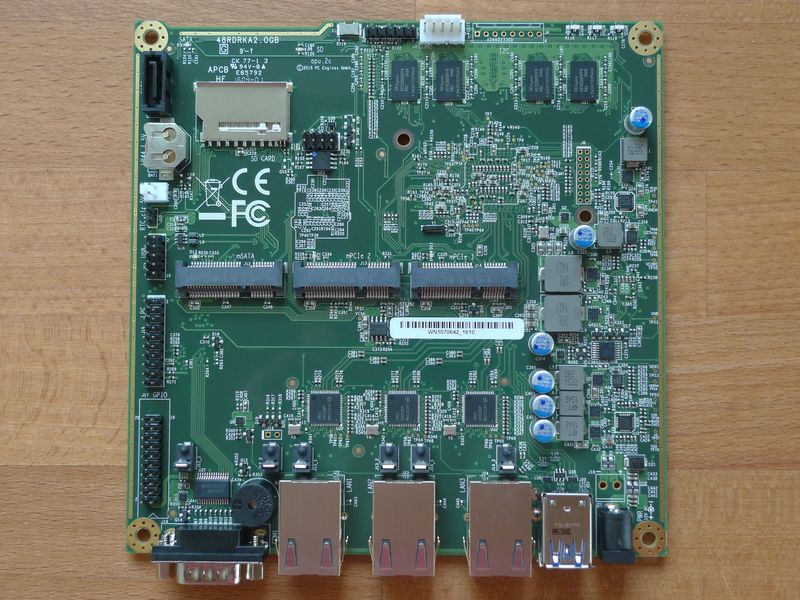Are Pc Engines Apu Serial Console For Mac
I got a hold of a pretty unique device, it’s system board that is designed for a simple router. Check out some sites that talk about the system board:. You can even buy a DIY kit:. On top of the Kit I ended up getting an SD card: Here is the device when it’s all ready: Support for APU 1D4 I ran into a couple of sites that talked about the device.
It looks like OpenWrt has some support but it doesn’t look finished:. I also saw that the BSD Router Project had luck with the device:. And lastly I ran into a couple of sites that installed pfSense on the device:. So I decided to try out pfSense. Prepare Serial Communication Client I was lucky and I had an old machine with a serial port. First we can find the device name for the serial port.
┌─elatov@gen - /home/elatov - 2016-04-30 06:49:15 └─0 sudo fdisk -l /dev/sdb Disk /dev/sdb: 967 MiB, bytes, 1980416 sectors Units: sectors of 1. 512 = 512 bytes Sector size (logical/physical): 512 bytes / 512 bytes I/O size (minimum/optimal): 512 bytes / 512 bytes Disklabel type: dos Disk identifier: 0x90909090 Device Boot Start End Sectors Size Id Type /dev/sdb4. 0 0 24.4M a5 FreeBSD Install pfSense on APU 1D4 I plugged the device into my Serial Port and started up minicom (I also saved all the output just in case). 2.3-RELEASEroot@pf.kar.int/root: diskinfo -t /dev/da0s1a /dev/da0s1a 512 # sectorsize 6 # mediasize in bytes (11G) 23130843 # mediasize in sectors 0 # stripesize 40448 # stripeoffset 1439 # Cylinders according to firmware. 255 # Heads according to firmware.
63 # Sectors according to firmware. 05 # Disk ident. 2.3-RELEASEroot@pf.kar.int/root: usbconfig -u 6 -a 2 dumpdevicedesc ugen6.2: at usbus6, cfg=0 md=HOST spd=HIGH (480Mbps) pwr=ON (100mA) bLength = 0x0012 bDescriptorType = 0x0001 bcdUSB = 0x0201 bDeviceClass = 0x0000 bDeviceSubClass = 0x0000 bDeviceProtocol = 0x0000 bMaxPacketSize0 = 0x0040 idVendor = 0x058f idProduct = 0x6366 bcdDevice = 0x0100 iManufacturer = 0x0001 iProduct = 0x0002 iSerialNumber = 0x0003 bNumConfigurations = 0x0001 CLOG Logs Most of the logs on pfSense are in CLOG format and therefore we need to use clog to read the logs: So we can do this.
2.3-RELEASEroot@pf.kar.int/root: free SYSTEM MEMORY INFORMATION: memwire: 263172096 ( 250MB) 6% Wired: disabled for paging out memactive: + 40529920 ( 38MB) 0% Active: recently referenced meminactive:+ 75386880 ( 71MB) 1% Inactive: recently not referenced memcache: + 0 ( 0MB) 0% Cached: almost avail. For allocation memfree: + ( 3551MB) 90% Free: fully available for allocation memgapvm: + 0 ( 0MB) 0% Memory gap: UNKNOWN - - - - memall: = ( 3912MB) 100% Total real memory managed memgapsys: + 122908672 ( 117MB) Memory gap: Kernel?! - - - memphys: = ( 4030MB) Total real memory available memgaphw: + 68988928 ( 65MB) Memory gap: Segment Mappings?! - - - memhw: = ( 4096MB) Total real memory installed SYSTEM MEMORY SUMMARY: memused: 495599616 ( 472MB) 11% Logically used memory memavail: + ( 3623MB) 88% Logically available memory - - - - memtotal: = ( 4096MB) 100% Logically total memory But it looks like the memory utilization is pretty small, can’t wait to put suricata on here and see how it fairs.
System Information Here is a sample dmidecode output. 2.3-RELEASEroot@pf.kar.int/root: dmidecode -t processor # dmidecode 3.0 Scanning /dev/mem for entry point. SMBIOS 2.7 present. 2.3-RELEASEroot@pf.kar.int/root: pkg search suricata pfSense-pkg-suricata-3.07 pfSense package suricata suricata-3.01 High Performance Network IDS, IPS and Security Monitoring engine 2.3-RELEASEroot@pf.kar.int/root: pkg search snort pfSense-pkg-snort-3.2.9.112 pfSense package snort snort-2.9.8.0 Lightweight network intrusion detection system 2.3-RELEASEroot@pf.kar.int/root: pkg search barnyard barnyard2-1.13 Interpreter for Snort unified2 binary output files Other Similar Products Even though this device is 2 years old it still looks pretty good. It looks like you can get a newer device from pfSense:.
I think if this one starts to slow down, I might take a look at the newer devices coming out.

I was able to do it on two APU boards using a “null modem” USB cable. My procedure may not be the cleanest but it works and I didn’t have time to bring it to perfection.
Are Pc Engines Apu Serial Console For Mac Download

In order to be succesful I had to use the USB stick image and tweak the Syslinux and Grub configuration to add serial support. /syslinux/extlinux.conf: add this as FIRST line: serial 0 115200 then replace the default directive: default freepbx-noraid-asterisk11 then on each of the “append” rows I removed “vga=normal” and added the following at the end of the line: console=tty0 console=ttyS0,115200n8 Also remove the “menu color” and “menu background” directives /syslinux/grub.conf: remove or comment the following line: splashimage=@SPLASHPATH@ then add: serial -unit=0 -speed=115200 -word=8 -parity=no -stop=1 terminal -timeout=15 serial console And try to boot. You should see the prompt “boot:”, press Enter and it will boot the “freepbx-noraid-asterisk11” image. After installation it will reboot and on reboot (the first time you’ll have to wait for a few minutes) you’ll have to point your browser to the DHCP IP address it negotiated. If your router doesn’t show the DHCP leases you can see if you find it via arp: arp -al or some other heuristic Ah: it goes without saying that you have to use a terminal emulation program to use serial port console. On Mac OSX you can open terminal and issue the following command: screen /dev/your-tty-device 115200 Regards, Marco.